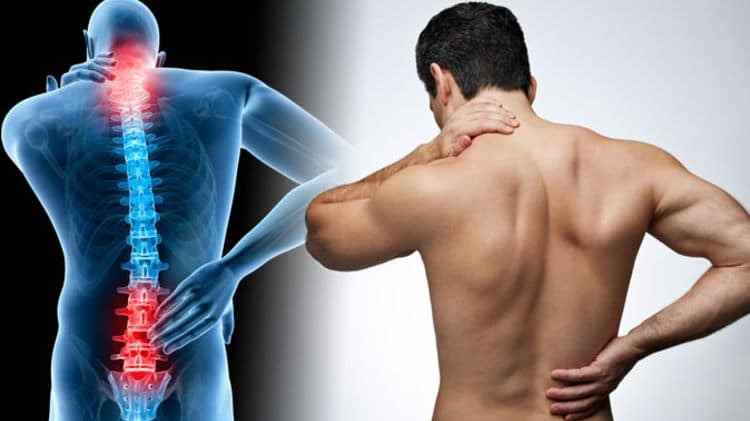ACL injury recovery | physiotherapy for ACL tear | ACL surgery recovery
The anterior cruciate ligament (ACL) is one of the four major ligaments in the knee joint. It plays a vital role in stabilizing the knee during activities like running, jumping, and changing direction. Unfortunately, it is also one of the most commonly injured ligaments, especially among athletes involved in high-intensity sports like football, basketball, or cricket.
An ACL injury can range from a mild sprain to a complete tear. Recovery can be lengthy and challenging, particularly after surgery. However, physiotherapy plays a critical role in ACL injury recovery, whether the treatment is conservative (non-surgical) or surgical (ACL reconstruction).
Common Causes of ACL Injuries
ACL injuries typically occur due to:
- Sudden stops or changes in direction
- Landing awkwardly after a jump
- Direct impact or collision (e.g., during sports)
- Overstretching or twisting of the knee
Symptoms of an ACL Tear
Some of the most common symptoms include:
- A popping sound at the time of injury
- Immediate swelling
- Instability or “giving way” of the knee
- Pain and difficulty walking
- Limited range of motion
Why Physiotherapy is Crucial for ACL Recovery
Whether you’ve undergone ACL reconstruction surgery or opted for a non-surgical route, physiotherapy is essential in guiding your knee back to full function. A structured physiotherapy program helps:
- Reduce pain and swelling
- Regain strength and mobility
- Improve balance and proprioception
- Prevent further injury
- Prepare you for a safe return to sports
Physiotherapy in ACL Injury Recovery: Phase-by-Phase Guide

ACL rehabilitation is typically divided into phases, each with specific goals and treatment techniques.
Phase 1: Immediate Post-Injury or Post-Surgery (Week 0–2)
Goals:
- Control swelling
- Reduce pain
- Protect healing tissues
- Begin a gentle motion
Physiotherapy Treatment:
- Cryotherapy (ice packs)
- Compression with knee braces
- Elevation to reduce swelling
- Gentle range-of-motion (ROM) exercises (heel slides, quad sets)
- Use of crutches to avoid weight bearing (if advised)
Phase 2: Early Rehab Phase (Week 2–6)
Goals:
- Restore knee movement
- Begin muscle strengthening
- Improve weight-bearing tolerance
Treatment Techniques:
- Active ROM exercises (heel slides, wall slides)
- Isometric exercises for quadriceps and hamstrings
- Closed-chain exercises like mini squats and leg presses
- Patellar mobilization
- Gait training without limping
Key Note: Regaining full knee extension is critical in this phase.
Phase 3: Intermediate Strengthening Phase (Week 6–12)
Goals:
- Build muscle strength and endurance
- Improve neuromuscular control
- Increase functional movements
Exercises and Therapy:
- Leg presses and step-ups
- Stationary biking for endurance
- Balance board training
- Proprioception drills
- Hamstring curls
- Initiate light aerobic activities
Phase 4: Advanced Strengthening & Agility (Week 12–20)
Goals:
- Improve agility and coordination
- Reintroduce sport-specific skills
- Enhance dynamic balance
Physiotherapy Focus:
- Plyometric drills (jumping, hopping)
- Lateral movements (side lunges, agility ladders)
- Resistance band training
- Treadmill jogging (if cleared by surgeon)
- Start light sport-specific drills under supervision
Phase 5: Return to Sport (Month 5–9+)
Goals:
- Full functional recovery
- Prevent re-injury
- Ensure psychological readiness
Return-to-Play Protocol:
- Single-leg hop tests
- Agility and cutting drills
- Sports simulation training
- Mental confidence-building
- Final clearance from your orthopedic surgeon and physiotherapist
Top Home Exercises for ACL Rehab (Under Guidance)
Here are some effective and safe exercises for ACL recovery:
1. Heel Slides
- Helps restore knee flexion
- Slide your heel toward your buttocks while lying down
- 10–15 reps
2. Straight Leg Raises
- Strengthens quadriceps without bending the knee
- Keep the knee locked and raise the leg 12–15 inches
- 3 sets of 10
3. Quad Sets
- Tighten the thigh muscle and hold for 5 seconds
- Repeat 10 times every hour
4. Bridges
- Strengthens glutes and hamstrings
- Lie on your back, lift your hips slowly
- 3 sets of 12
5. Mini Squats
- Start with wall-supported squats
- Keep depth under 45° in early phases
Progression Tips for Faster ACL Recovery
- Always follow your physiotherapist’s timeline
- Avoid high-impact activities too early
- Keep up with daily home exercises
- Stay hydrated and eat protein-rich foods for tissue repair
- Use proper footwear with arch support
- Monitor for any unusual swelling or instability
When to See a Physiotherapist
You should consult a physiotherapist if:
- You recently had an ACL tear or surgery
- You feel instability in your knee
- You want to return to sports safely
- You have stiffness, weakness, or pain in your knee
- Your previous recovery has plateaued
At The PhysioFix, we offer customised ACL rehabilitation programs with a blend of hands-on therapy, exercise prescription, and functional training.
Surgical vs. Non-Surgical Recovery: Does it Change Physiotherapy?
Yes.
- Surgical Recovery (ACL Reconstruction): Emphasises protecting the graft and preventing stiffness in the early weeks.
- Non-Surgical Rehab: Focuses on muscular compensation, stability, and activity modification.
Both approaches require progressive, structured rehab, but your therapist will adapt the protocol based on your choice of treatment and personal goals.
Common Mistakes in ACL Recovery
- Rushing back to sports too soon
- Ignoring post-op precautions
- Skipping physiotherapy sessions
- Not following home exercise routines
- Comparing recovery to others (every ACL case is unique)
Final Words
ACL injuries are serious but highly recoverable with proper physiotherapy. Whether you’re an athlete or an active individual, the right rehab protocol can help you return to your routine safely and confidently.
At The PhysioFix, we provide one-on-one care, detailed movement assessments, and personalised recovery plans to help you bounce back stronger than before.


